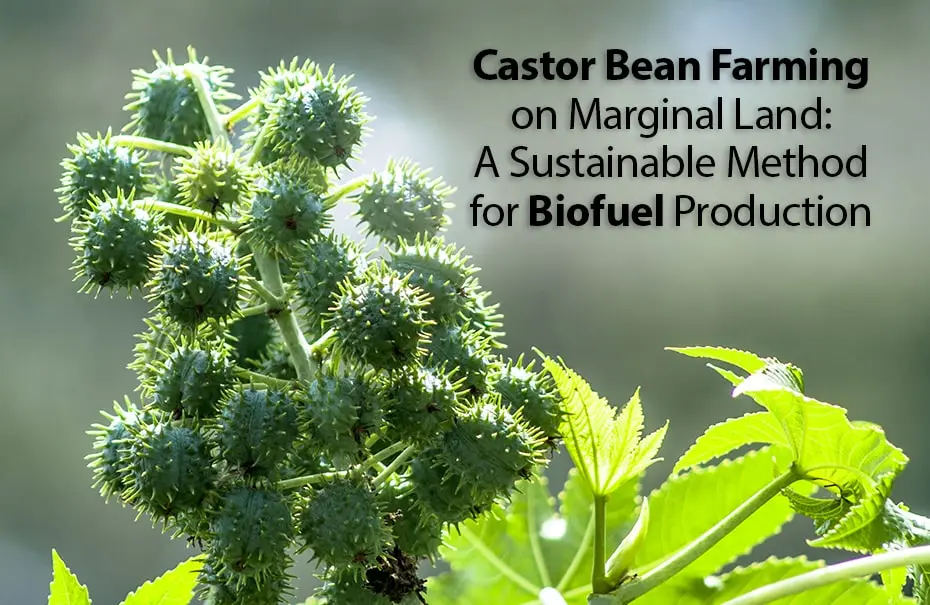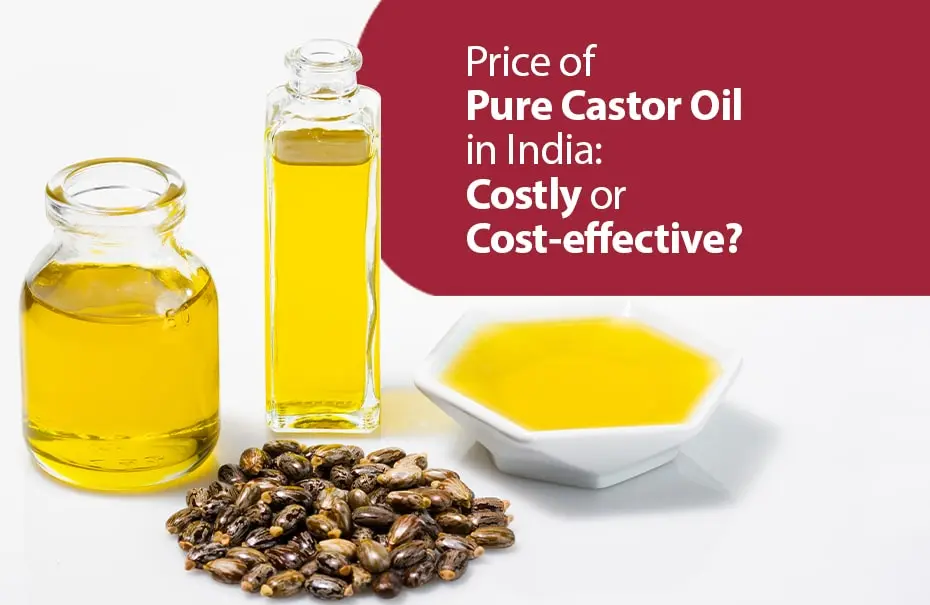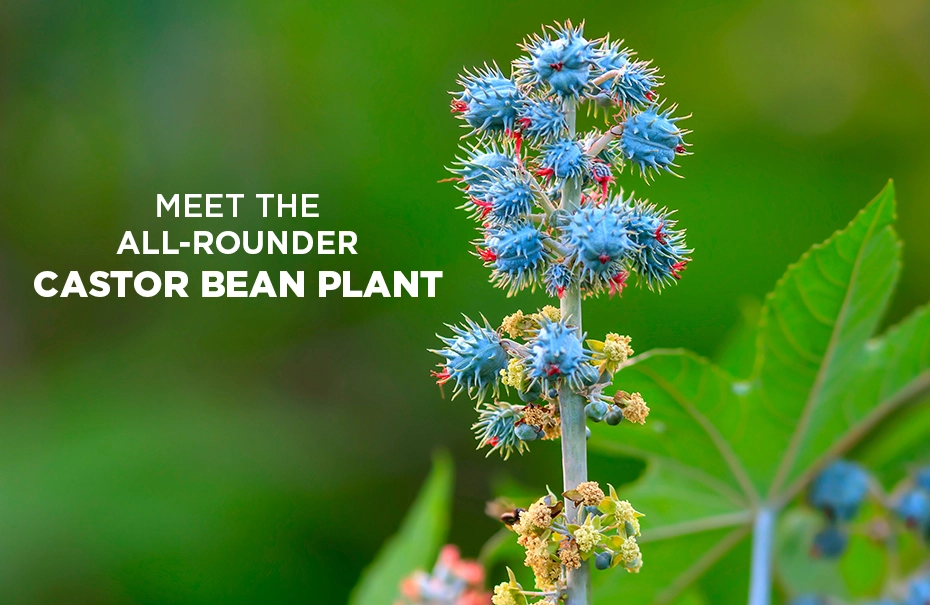Castor Bean Farming on Marginal Land: A Sustainable Method for Biofuel Production

We are running out of fossil fuels and as a green alternative to it, we have biofuels derived from edible vegetable oils, but, they too are raising serious issues like food and land shortages. So, are we nearing a dead end? No, there is one sustainable solution to all problems, and it’s none other than castor farming on marginal land to produce Biofuel.
We know you might be having too many questions on your mind, so allow us to clear them one by one and explain everything in detail.
Fossil Fuels, Explained
In the Earth’s crust, fossil fuels are a mixture of organic substances including fossilized plants and animal remnants that originated millions of years ago and contain carbon and hydrogen, which can be burned to generate energy. These flammable deposits decay with the passage of time and are buried beneath layers of sediment and rock.
Different types of fossil fuels were formed over centuries, depending on the composition of organic matter, the length of time, and the temperature and pressure conditions in which those organic materials were buried.
Coal, petroleum, and natural gas are the three major types of fossil fuels that are formed due to the deposits of once-living organisms. but unfortunately, they all are non-renewable sources of energy, meaning it takes a very long time for them to replenish, and by the pace at which we all are using up fossil fuels; we may soon run out of it.
Are We Running Out of Fossil Fuels? What Then?
Yes, fossil fuel depletion is becoming a matter of concern. We at present are consuming fossil fuels that were formed millions of years ago, and at the rate our reserves are being depleted, they cannot be regrown at a scale compared to their consumption because it will take another million years to refill our used-up fossil fuel reserves.
Now when we talk about fossil fuels, coal, oil, and natural gas are all that come to our mind along with their industrial and automobile applications but, there are other fuels like gasoline, diesel, and jet fuel, which are also fossil fuels, derived from oil.
In fact, any petroleum-based product is derived from crude oil, which is used in everything from combustible fuels to paint, makeup, fabrics, and of course—plastic. We use plastic in nearly everything we use every day, including toys, food wrappers, electronics, and even products such as heart valves and tires, all of which are derived from oil. So, if you are thinking you are not using fossil fuels, then you may have to rethink what you just said.
A 2019 publication from the Millennium Alliance for Humanity and the Biosphere at Stanford University predicts that the world’s oil reserves will run out by 2052 (30 years); natural, natural gas by 2060 (40 years), and coal by 2090 (70 years).
Although we have renewable resources, green alternatives, and other options in making, to save our fossil fuel for the next generation, producing them at such a large scale so as to meet our population’s needs with the current and expected future levels of usage is very challenging. Still, the effort to make it possible has already begun and we today have Biofuels, which are extracted from edible crops such as soybean, rapeseed, palm, mustard, and sunflower. But, that doesn’t give us a free hand in misusing fossil fuels. It must be conserved and consumed very thoughtfully.
Biofuel Production: The Discovery & The Process
Biofuel is undoubtedly a game-changing find as it is obtained from renewable resources like edible plants or biomass. It has proven to be a sustainable alternative to fossil fuels as it can be refilled quickly and one need not have to wait a million years for it.
Fossil fuels, although energy dense, release the gas carbon dioxide (CO2) in excess amounts, which is a greenhouse gas because it can trap the sun’s rays inside the earth’s atmosphere, behaving exactly like the greenhouse glassroof. Therefore, since the burning of fossil fuels causes a rise in CO2 concentrations in the atmosphere, leading to climate disruptions including global warming, scientists and engineers left no stone unturned and discovered a new kind of fuel that kills two birds with one stone – do not add CO2 to the atmosphere, and can be renewed when supplies run low and that is Biofuel.
Biofuel is a low-carbon fuel that is produced from biomass (a general term referring to any organic (carbon-containing) material that comes from living matter, such as plants) or from energy crops like wheat, corn, mustard, palm, soybean, and sugarcane, etc. The oil from such oil-bearing crops is extracted and further treated to obtain biofuel while biomass can be converted directly into liquid fuels, called “biofuels,” to help meet transportation fuel needs.
Bio-alcohol and biodiesel are two general categories of biofuels. The former, such as ethanol, is created through fermentation, using yeast and bacteria to break down starches and sugars from corn and other plants. Biodiesel, on the other hand, is produced in refineries that use new and used vegetable oils and animal fats such as recycled cooking grease which are then treated with alcohol and converted to biodiesel. lt is non-toxic and biodegradable and is a cleaner-burning replacement for petroleum-based diesel fuel.
Some biofuels can provide renewable alternatives to fossil fuels such as gasoline, which is a type of fuel that shows a lot of promise for our energy future, because it is both renewable and environmentally friendly. In other words, biofuel is sustainable
The Good and Bad of Biofuel Production
Biofuels burn cleaner than fossil fuels, release fewer pollutants and greenhouse gases such as carbon dioxide, into the atmosphere, and are renewable which is the best thing about biofuels but, apart from all the good things there are a few drawbacks to them as well.
Since food and fuel both are important for our survival, the production of biofuel is causing two major side effects – food and land shortages. First of all, for producing biofuels, a lot of edible crops like wheat, corn, soybean, sunflower, etc., are harvested in tons which is creating food crisis as for many living organisms others than human, they too are their primary food source.
Secondly, the cultivation of such edible crops requires an excessive amount of water, rich soil, and fertilizer, which is creating yet another serious issue of land shortage. Many fertile lands are being used up to grow oil-bearing edible crops that also require a good amount of water for their growth, for the production of biofuels which is causing serious environmental concerns that cannot be ignored.
In short, using food crops as fuels is not only giving birth to serious problems like rise in food prices, food, and land shortage, and deforestation but is also very expensive and even energy-consuming as the tools and power plants required to convert them need energy and a lot of money to run them.
So, you might be thinking is there a way out? Yes, efforts are being made to produce biofuels from plant materials that cannot be eaten by humans, such as corn stalks, grasses, and wood chips, among which Castor Bean is considered to be the most suitable crop because it alone can solve multiple issues without the need of any major investment in it.
Castor Bean Farming on Marginal Land
The castor bean plant is one such oil-bearing plant that is neither consumed by humans nor requires fertile land or excess water to grow which makes it the best and the most suitable crop for the production of biofuels.
Ricinus communis, the castor bean or castor oil plant, is an exotic, ornamental, semi-woody, fast-growing, large shrub or small tree, whose seeds contain a highly poisonous substance known as ricin that when inhaled or ingested, can be lethal to both humans and animals. Hence, it gets ruled out from the list of edible crops, which means it eliminates the problem of food shortage as it can be used for the production of biofuels without any concern.
Furthermore, the castor plant can invade neglected farmland and pasture and can easily grow anywhere along riverbeds, railroads, roadsides, or other disturbed areas which means it can be grown on marginal land.
Referred to as ‘idle’, ‘degraded’, or ‘surplus’ land, marginal land is a space that has very low value. Due to poor soil or other undesirable characteristics, marginal land bears very less potential for providing profits to the owners. It has minimal to nil industrial or agricultural value and is often located at the edge of a place where there are a lot of sand deposits, deserts, and other barren areas, or at a distance that is considered prohibitive. But, although of such low importance, marginal lands can be beneficial for producing biofuels because they could produce biomass without pushing out traditional crops and competing with farmland. Certain plants like castor bean, switchgrass, shrub willow, and giant miscanthus can be grown easily on marginal land as they require less water and nutrient soil for growth making them the best solution to problems raised by biofuel production.
In a Nutshell
Castor bean farming on marginal land can solve all the problems that are created by the production of biofuel using edible crops like the food shortage as it is a non-edible plant, land shortage, and deforestation because it can be grown on a low-value land; like marginal land, and it is cheap because marginal land is inexpensive and castor plant is capable of flowering year around and grows and spread rapidly, leading to good yield.
Since the demand for biofuels is expected to double in the next few years, and could potentially allow us to decrease our dependence on fossil fuels, castor bean biodiesel will hopefully meet our need and is receiving great attention as it has many advantages over fuel, e.g., nontoxicity, biodegradability, renewability, and a decline in most exhaust emissions.



